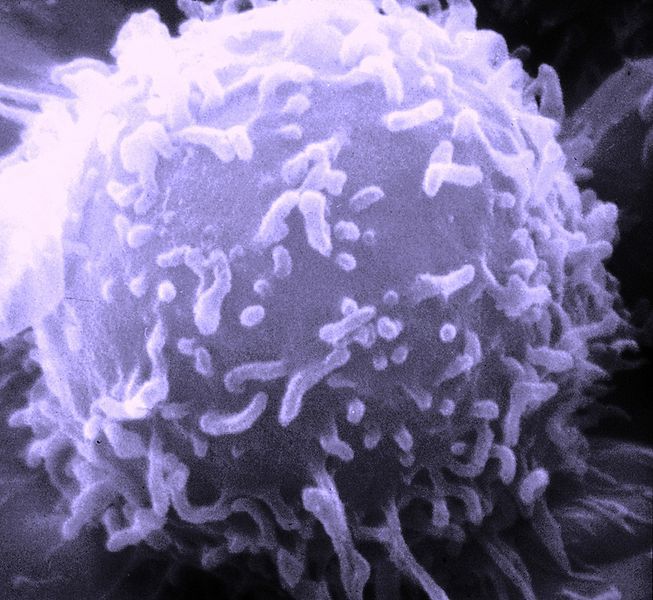-
 Abdominal cavity
Abdominal cavity
-
 Elasticity
Elasticity
-
 Spectrometry
Spectrometry
-
 Wetland
Wetland
-
 Acetyl-CoA
Acetyl-CoA
-
 Electrophoresis
Electrophoresis
-
 Urticaria
Urticaria
-
 Foraminifera
Foraminifera
-
 Vestigial structure
Vestigial structure
-
 Myrmecologist
Myrmecologist
-
 Hubble's law
Hubble's law
-
 Radius
Radius
-
 Actinomorphic
Actinomorphic
-
 GMO
GMO
-
 Venus
Venus
-
 Lexical section
Lexical section
-
 Joist
Joist
-
 Falcon 1
Falcon 1
-
 Covolume
Covolume
-
 Copenhagen interpretation
Copenhagen interpretation
-
 Aqueous
Aqueous
-
 Geode
Geode
-
 Coelacanth
Coelacanth
-
 EUCEB
EUCEB
-
 Basiphilous
Basiphilous
-
 Spherical aberration
Spherical aberration
-
 Macula
Macula
-
 Meursault
Meursault
-
 Galvanic corrosion
Galvanic corrosion
-
 ROT-13
ROT-13
Lymphocyte
Lymphocytes are a type of white blood cell.
Structure of lymphocytes
Lymphocytes belong to the leukocyte family (white blood cells). They are small round cells (approximately 7 micrometres in diameter) and contain a nucleus. They are found in blood, bone marrow (where they are produced) and lymphoid tissues (spleen, lymph nodes).
There are two main families of lymphocytes, which do not differ morphologically but are different in molecular terms (depending on the receptors on their cell surface): B lymphocytes and T lymphocytes.
Lymphocyte function
Lymphocytes play a central role in the immune system. Consequently, their blood concentrations increase during infections. The two types of lymphocytes use two different mechanisms.
B lymphocytes (which develop in the bursa of Fabricius in birds, hence the name B), are responsible for antibody production, or humoral immunity.
T lymphocytes (which are produced in the thymus, hence the name T) are involved in cell-mediated immunity.
Lymphocytes and AIDS
T lymphocytes (particularly T4, which carry the surface receptor CD4 on the cell) are target cells for the AIDS virus, which is why people infected with the virus become immunosuppressed.
 Lymphocytes are small round cells. © National Cancer Institute, Wikimedia, public domain
Lymphocytes are small round cells. © National Cancer Institute, Wikimedia, public domain
Latest
Fill out my online form.



